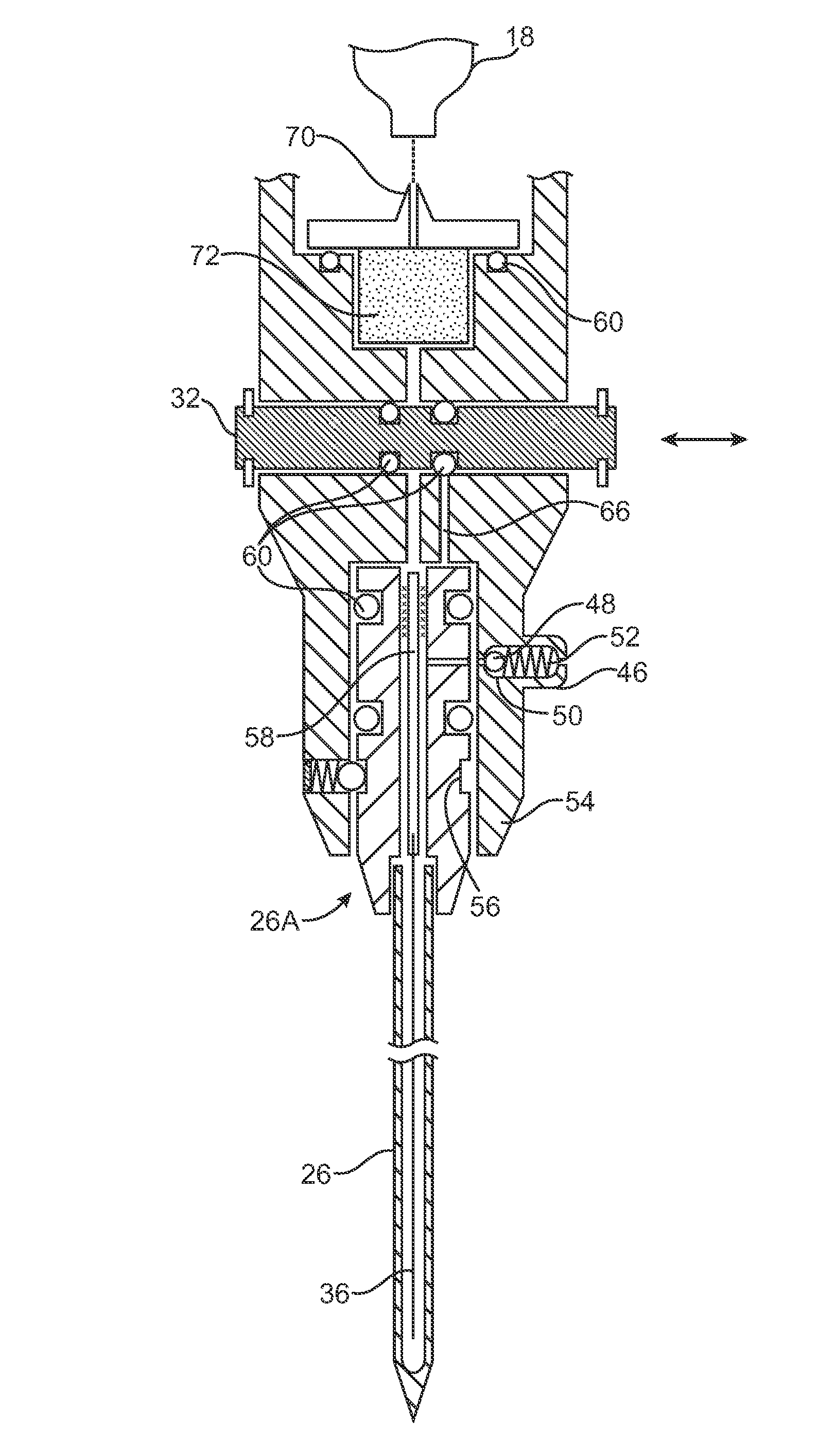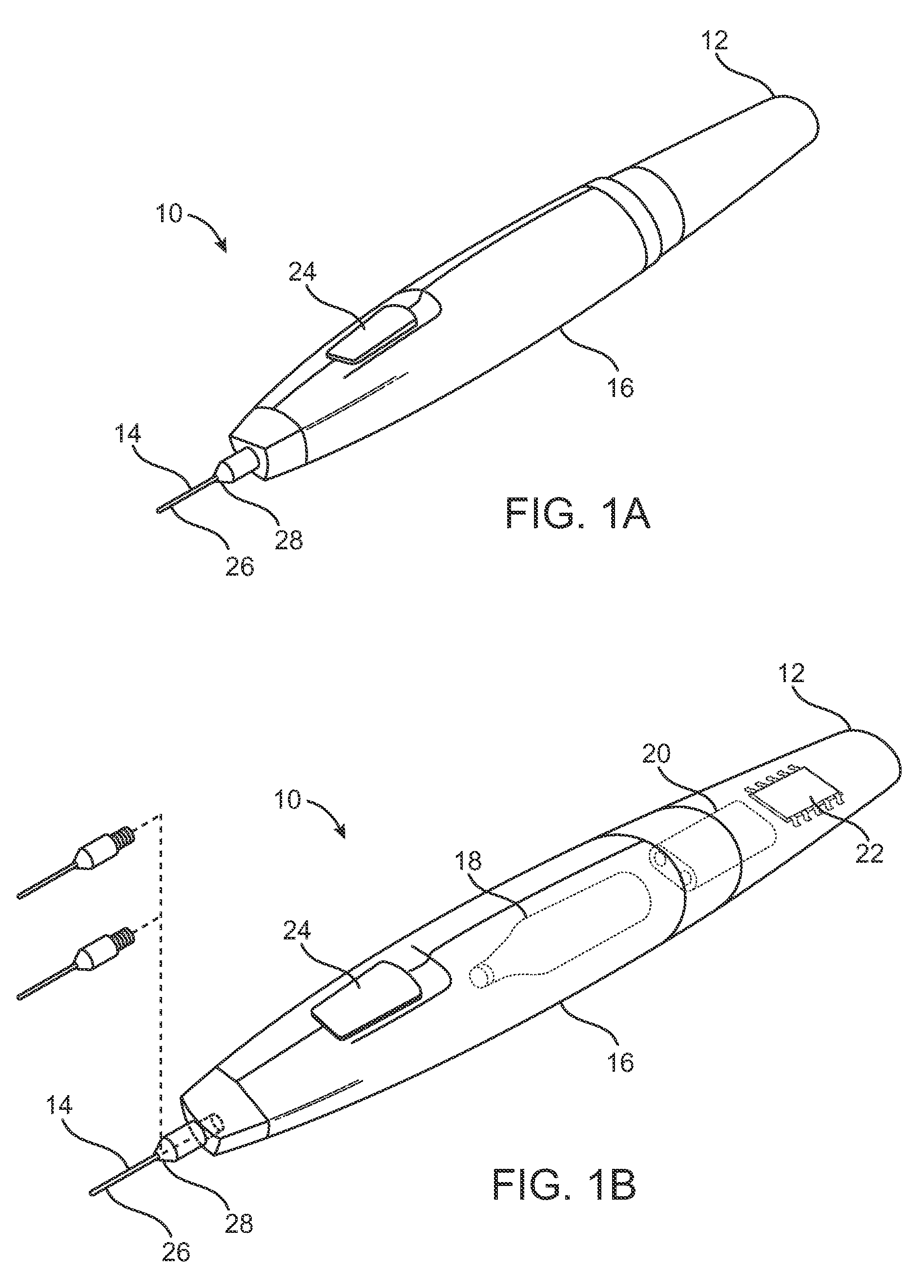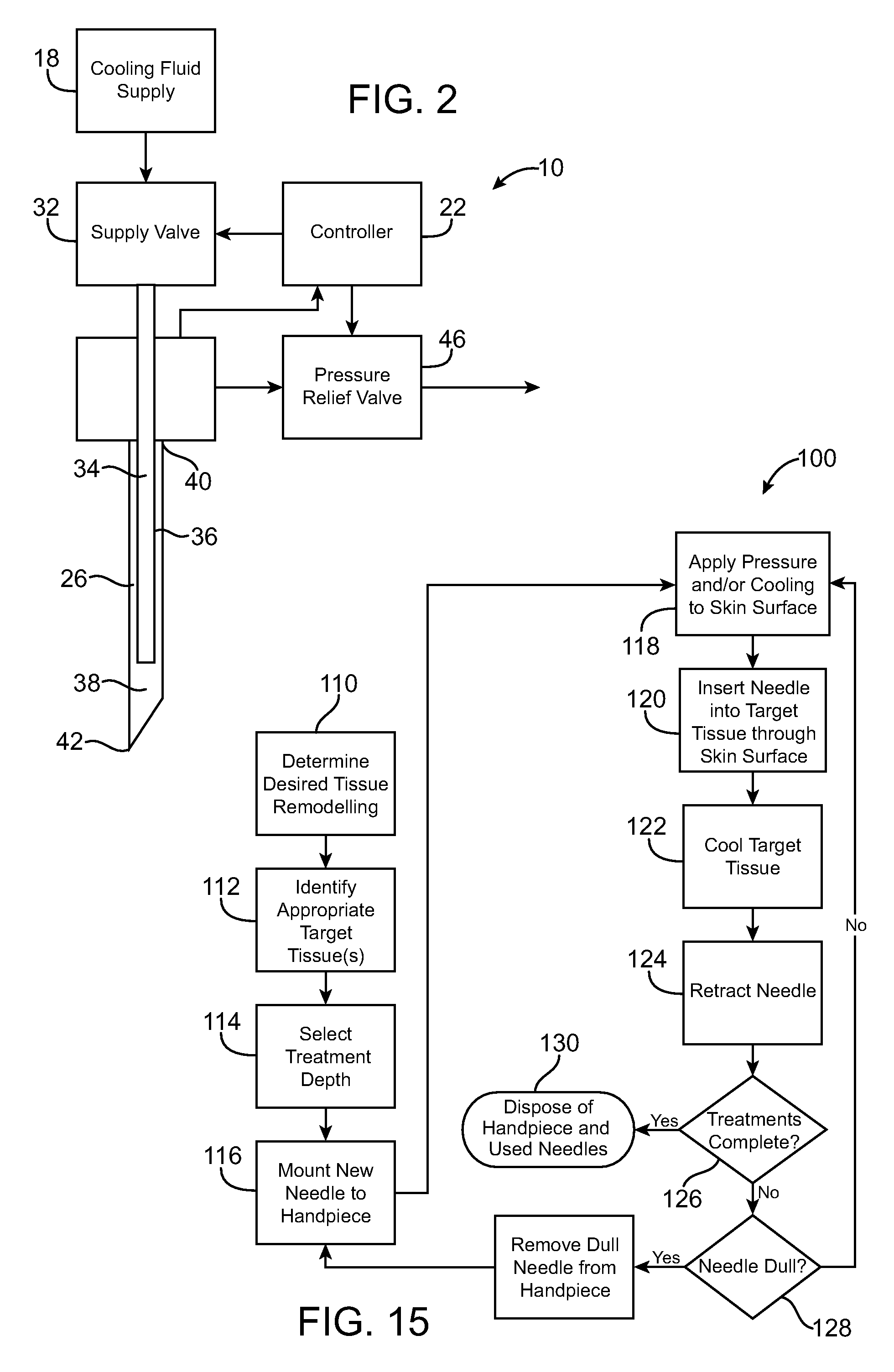Replaceable and/or easily removable needle systems for dermal and transdermal cryogenic remodeling
a technology of cryogenic remodeling and needles, which is applied in the field of medical devices, systems, and methods, can solve the problems of small cryogenic cooling needle probes that may dull or be damaged by insertion, and achieve the effect of decreasing the overall time of the procedur
- Summary
- Abstract
- Description
- Claims
- Application Information
AI Technical Summary
Benefits of technology
Problems solved by technology
Method used
Image
Examples
Embodiment Construction
[0042]The present invention provides improved medical devices, system, and methods. Embodiments of the invention will facilitate remodeling of tissues disposed at and below the skin, optionally to treat a cosmetic defect, a lesion, a disease state, and / or so as to alter a shape of the overlying skin surface.
[0043]Among the most immediate applications of the present invention may be the amelioration of lines and wrinkles, particularly by inhibiting muscular contractions which are associated with these cosmetic defects so as so improve an appearance of the patient. Rather than relying entirely on a pharmacological toxin or the like to disable muscles so as to induce temporary paralysis, many embodiments of the invention will at least in part employ cold to immobilize muscles. Advantageously, nerves, muscles, and associated tissues may be temporarily immobilized using moderately cold temperatures of 10° C. to −5° C. without permanently disabling the tissue structures. Using an approach...
PUM
 Login to View More
Login to View More Abstract
Description
Claims
Application Information
 Login to View More
Login to View More - R&D
- Intellectual Property
- Life Sciences
- Materials
- Tech Scout
- Unparalleled Data Quality
- Higher Quality Content
- 60% Fewer Hallucinations
Browse by: Latest US Patents, China's latest patents, Technical Efficacy Thesaurus, Application Domain, Technology Topic, Popular Technical Reports.
© 2025 PatSnap. All rights reserved.Legal|Privacy policy|Modern Slavery Act Transparency Statement|Sitemap|About US| Contact US: help@patsnap.com



